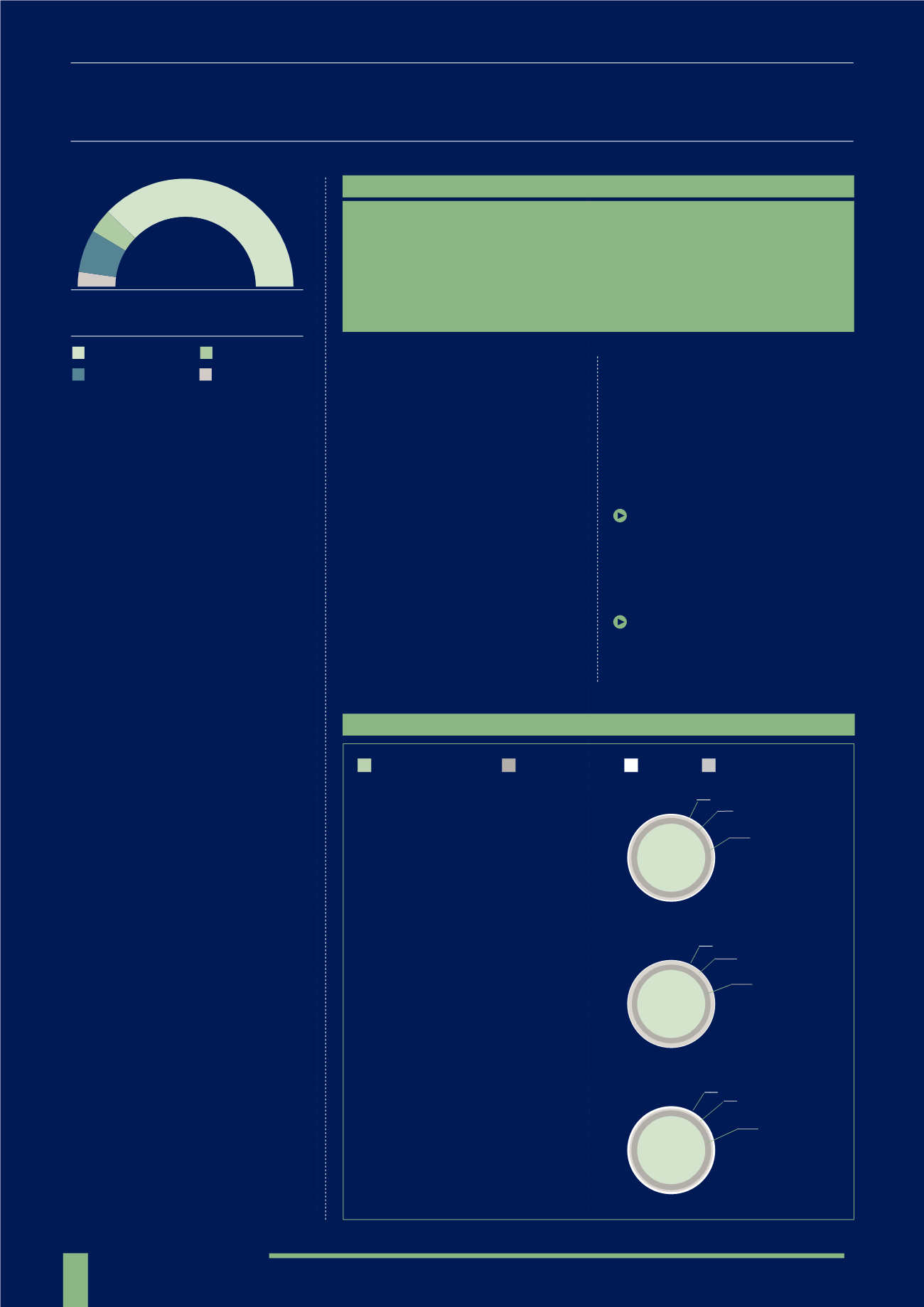
58
LEGAL STRUCTURE
This section looks at the differing
legal structures used to create BPR
investment products. Here they
are broken down into discretionary
portfolios, personal trading companies,
single company investments and
Unregulated Collective Investment
Schemes (UCIS). Each will hold shares
in underlying companies, partnerships,
SPVs or assets that qualify for BPR.
Products can be structured several
different ways in order to access BPR
qualifying investments. The most
common is a discretionary portfolio,
making up three quarters of the market.
Managers invest on a discretionary
basis on behalf of their customers,
with the investors having beneficial
ownership of the underlying assets.
It’s easy to see why discretionary
managed portfolios are so prevalent.
This is a simple legal structure that
is familiar to advisers and investors
and has no restrictions on promotion.
The investment process is quick, with
no legal complications or specialist
structures, which keeps set up costs
down. In fact it would be reasonable
to expect that for any clients with the
levels of wealth that would prompt
them to seek IHT mitigation, this kind
of product will feel exactly the same as
investments they’ve made in the past in
their accumulation phase.
UCIS is the next most common, but the
majority of these products are closed
to new investment. UCIS is a fund
structure, so it lends itself to a fund
raise / fund close operating model.
However, UCIS structures were the
primary target of PS13/03, regulations
which restrict the promotion and
distribution of “non-mainstream pooled
investments” to HNW and sophisticated
investors. This is not a huge problem for
BPR products, but perhaps managers
feel that a discretionary portfolio
arrangement avoids some of the
negative press associated with UCIS.
Single company investments have 7%
of the market. These structures enable
an investor to become a shareholder
in a SPV that will carry out one or more
qualifying activities.
The least common investment structure
is a personal trading company used
to provide a bespoke service. This
structure gives the investor 100%
ownership of their own trading
company that will carry out BPR
qualifying trades and is a more
specialised structure that is more costly
to implement.
INVESTMENT STRUCTURE
ANALYSIS KEY POINTS
There are four main structures in
which BPR investment products are
offered: single company; personal
trading companies; discretionary
portfolios; and UCIS
Discretionary portfolios make up the
majority of the market and tend to hold
shares across a range of 10 to 30 BPR
qualifying companies.
BESPOKE SERVICES
There are several wealth managers that provide IHT planning on a completely
bespoke basis that qualify for BPR. They are very much like discretionary portfolios
but it is very difficult to identify these in the market because they are not widely
marketed and very little public material is available on them. Some bespoke
portfolios were captured in our research but since these products are tailored to
each investor without a consistent investment focus or targeted return, they were
not included here for analysis.
13
%
4
%
7
%
76
%
Personal trading
company
UCIS
Single company
Discretionary portfolio
OVERALL MARKET
PRODUCT STRUCTURE
STRUCTURE AND OBJECTIVE
INVESTMENT OBJECTIVE
The investment objective gives an
indication of the overall aim of the
investment and an indication of the
level of risk.
Unsurprisingly the majority of the
market (79%) is solely focused on
capital preservation. However, investors
can also choose growth investment
strategies (7%).
Products that combine both strategies
make up 12% of the market.
A higher percentage of BPR products
that invest in unlisted assets were
focused on capital preservation than
the AIM-based products. We can
speculate that AIM-based products
are more suitable for younger clients
who still need equity levels of return.
Unlisted assets are less volatile and
provide more predictable levels of
return.
Capital preservation
Capital growth
Capital preservation
and growth
Bespoke
ENTIRE
MARKET
2
%
7
%
12
%
79
%
76
%
0
%
12
%
12
%
UNLISTED
PRODUCTS
80
%
4
%
4
%
12
%
AIM
PRODUCTS


